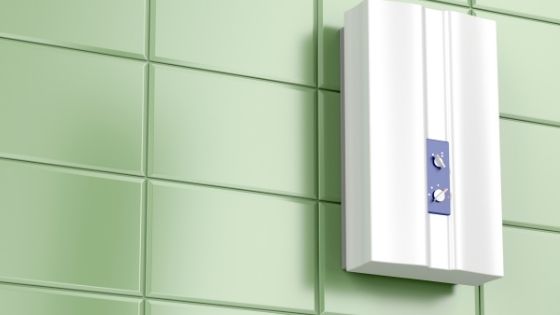Water heaters are among the essential appliances at home. Yet, you probably don’t think about them as long as they continue to deliver warm water to your tap. Still, it’s important to understand the basic concepts of how these devices work.
These devices consume roughly 25% of your electricity bill, which tells you how much work they’re doing. And like any other appliance, even the sturdiest water heater can break down due to wear and tear over the years. At some point, you’re going to have to replace your current unit.


Knowing how they function before seeking out residential plumbing services for a water heater installation is crucial to maintaining your home. O’Grady Plumbing offers tankless water heater installation in San Diego. We service all major brands including Rheem, Bradford White and Rinnai. Call us today for a free estimate! There are four types of heaters: tank-type, tank-less, hybrid, and point-of-use. For your reference, below are explanations of how each variant work and how they’re different from one another.
Tank-Type Water Heater
The most common kind in the United States, this uses a large insulated storage tank to hold hot water before it’s dispensed. Tank-types operate using either gas or electricity.
Gas-powered ones are more expensive than electric variants but are cheaper to use in the long run, as gas cost less than electricity. If efficiency is your main concern, electric models will appeal to you better because they have higher energy-factor ratings than gas-operated heaters.
When water enters the storage tank, it’s heated by the flame at the bottom of the tank if you’re using a gas model. Electric tank-types, on the other hand, warm the water using electric heating elements inside of the tank.
Then, a thermostat regulates the optimal temperature. Finally, a warm stream is pumped out of the tank through the supply pipes until it comes out of the faucet, shower, or appliance.
Tank-Less Water Heater
As its name implies, this compact device does not use a tank to store the heated liquid. This wall-hung device may be smaller than standard models, but it is capable of providing warm water to the entire house.
Also known as the on-demand heater, a tank-less model only begins to operate once a hot water tap is opened. Cold water is then sucked in by the device while a sensor activates a gas-powered heater or an electric heating element inside the heat exchanging chamber.
Water then passes through the heat exchanger and is instantly heated to the desired temperature. When the hot water leaves the chamber, it travels directly to the faucet. The tank-less heater shuts down once the tap is turned off.
Hybrid Water Heater
A hybrid type, also known as a heat pump water heater, is a cross between a standard heater and the energy-efficient heat pump. It operates by combining the mechanical components of a gas-fuelled heater and an electric model.
Instead of heating the water instantaneously, hybrid units capture heat from the indoor air and draw it into the machine’s evaporator coil. The machine then transfers the warmth to the incoming cold water inside the heat exchanger in the tank. Once the water reaches the preset temperature, it travels through the pipes until it reaches the tap.
A hybrid water heater costs almost twice as much as a standard unit, but that doesn’t mean it isn’t worth considering. Homeowners that use this variant are able to make up for added expense through their lower energy bills. On top of that, state and local energy rebates are awarded to families that opt for hybrid models.
Point-of-Use Water Heater
The point-of-use water heater is compact, tank-less, and electric-powered. This unit heats water just like an on-demand variant. However, it can only deliver warm water to a single fixture or two.
Commonly used as supplementary devices, point-of-use types are placed in rooms or fixtures that are too far away from the main water heater. Installing these units eliminates the hassle of waiting too long for the hot water after opening the tap. Not only is it very convenient, but it also saves you water and energy.
The average point-of-use unit is about 10 inches long and 13 inches wide, which means they easily fit inside of a sink’s vanity cabinet. They are also very sturdy and can last for up to 25 years.
When choosing among these different types of heaters, the best one ultimately depends on your preference and situation. View website to get the latest details and service. What’s most important is that you understand how they operate and differ from one another before purchasing a new unit.
























